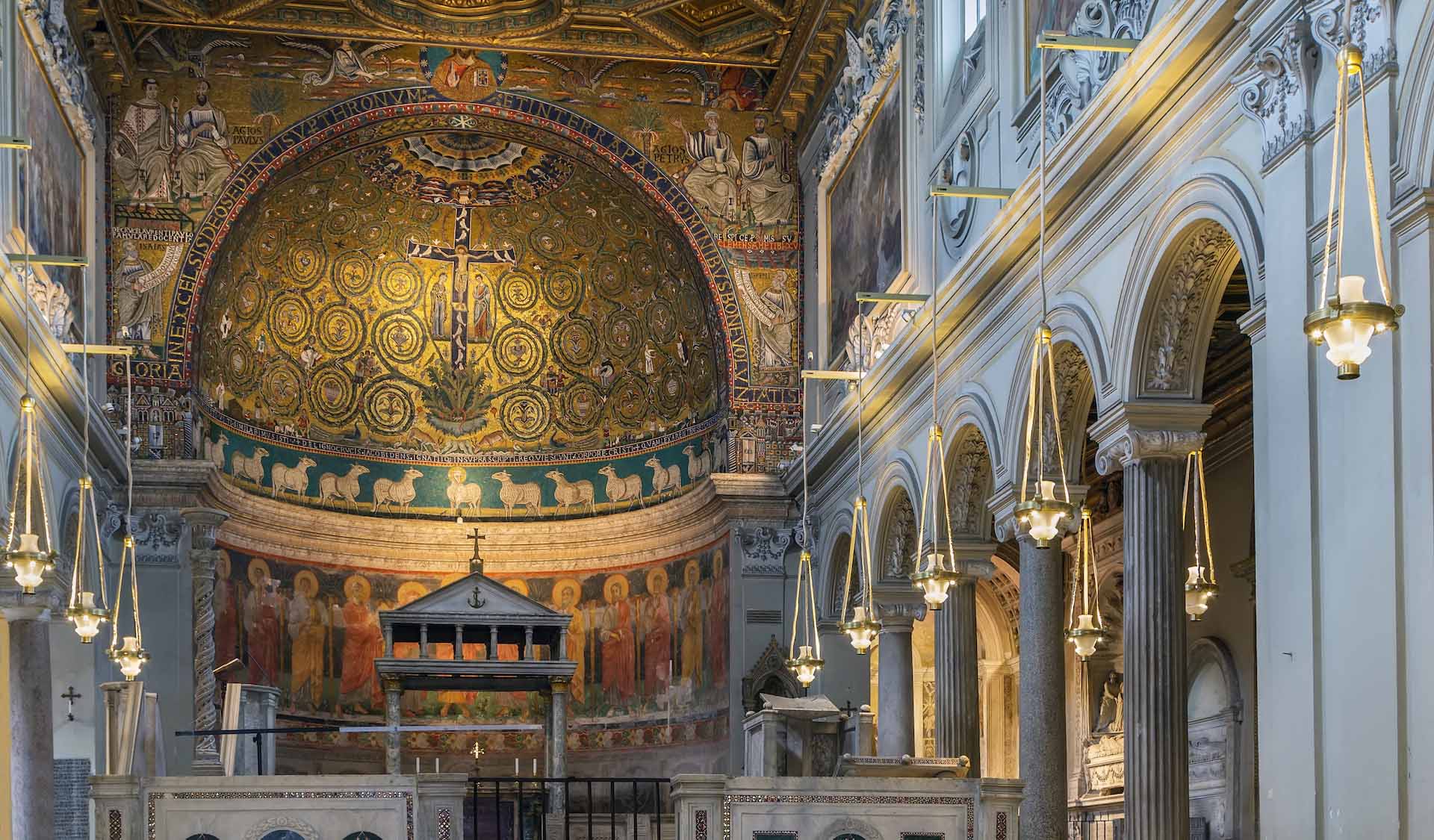The Eternal City has a myriad of open air sites and worth seeing museums that are known all over the world. But what about the hidden gems of Rome beneath the ground? Not everybody knows that there are well-preserved treasures under the streets of this ancient city as well. These breathtaking places that make the so-called Underground Rome so unique are not one but many, located in different areas of the city. Most of them are tunnels built by persecuted people that date back to the Roman Era, others, like Domitian Stadium, were built by the order of the Emperor to amuse roman citizens. Whatever underground site you choose, there are thousand-years old secrets to be unveiled.
Today we will unearth its best kept gems for a trip back in time!
San Clemente Basilica
This 3 level Basilica is a true must see in every Rome Underground Tour. San Clemente Basilica is located just a few steps away from Rome’s iconic symbol: the Colosseum. Although what we are able to see nowadays at ground level is the most recent holy place that dates back to the XII Century, this stunning minor Basilica is composed of 3 different levels, each one belonging to a different period of time. It is absolutely amazing due its incredibly detailed golden mosaics. Formerly known as a private home, it was soon turned into a clandestine place of Christian worship. In fact, at that time Christians were not allowed to show their faith publicly, instead they were tortured if found guilty.
Vicus Caprarius
This stunning underground site, also known under the nickname of “City of Water”, is maybe the best gathering of Rome underground tunnels in the city center. This archaeological area whose paths stretch much far beyond the Trevi district where its main entrance is located, is the real proof of Romans’ knowledge in architecture.
Vicus Caprarius, the undergrounds of Trevi Fountain, is made of a maze of subterranean secret passages just 9 meters under the current ground level. The name city of Waters refers to the main function of this hidden treasure: in fact thanks to the ancient brickworks built by the Romans the water keeps flowing from the aqueduct Acqua Virgo and filling up the beautiful baroque Fountain above.
Saint Callixtus Catacombs
Our itinerary along the underground tracks couldn’t miss to mention the impressive Rome Catacombs dedicated to Saint Callixtus complex located along the Appian Way.
These are some of the best catacombs in Rome, both for the way they have been built and how they managed to resist throughout the centuries.
They have great dimensions (about 30 hectares) and are part of a funerary complex known also as Complesso Callistiano that stretches for 20 kilometers. Its most remarkable feature is definitely the tombs of the Popes and martires that were buried here in the area of Saint Cecilia Tomb and the Crypt of the Popes.
Domitian Stadium
The construction of Domitian Stadium dates back to 80 AD, when Emperor Domitian ordered the realization of an area inspired by Greek’s Stadiums with the purpose of entertaining Roman inhabitants and to gain their approval. Due to its Greek layout, the imperial building took the name of Circus Agonalis as well.
Domitian Stadium was meant to be a permanent Athletic location for foot races, smaller than Circus Maximus. Its pattern resembled both Circus Maximus, for its U-shape and Colosseum for its façade
This Stadium was located in the north area of Campus Martius, under the level of the current Navona Square.
Capuchin Crypt
Capuchin Crypt is a creepy location recommended to brave visitors looking to something off the beaten path. Only 5 minutes walking from Piazza Barberini, located along the wealthy Via Veneto, this Crypt is part of a bigger complex dedicated to Our Lady of the Conception. The crypt, built under the main level, consists of many small chapels where it is possible to admire 3700 bodies and skeletons belonging to Capuchin Friars who were buried there.



